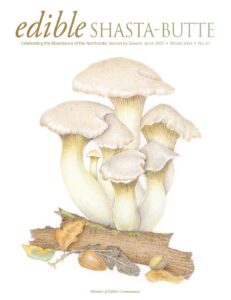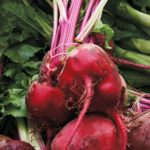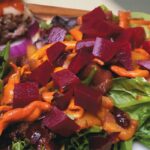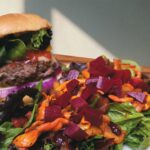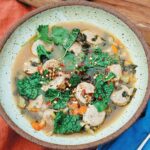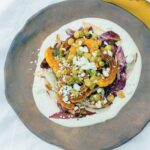
story and photos by wolfgang rougle
The florivore’s season begins in early January when the violets bloom.
These almost immortal little plants, with their tough corky rhizomes and their plain, vaguely heart-shaped leaves, often go unnoticed until they bloom. They’re rich in vitamin C. Pansies, a cultivated relative of violets, are also edible, as are virtually all of the more than a hundred species of Viola found worldwide. Soon after the violets, wild mustard begins blooming all across the North State. The cross-shaped brilliant yellow flowers of wild mustard are spicy and good scattered sparingly on salads. A close cousin, wild radish (which comes in shades from white to pink to purple, at left), is just as edible, and so are all the flowers in the Brassica family, from the tiny white firecrackers of shepherd’s purse to the loose yellow spires of bolted kale.
In the second or third week of April, the black locust trees burst into bloom. Black locusts (Robinia pseudoacacia, below) are splendid, graceful, smoothbarked trees with pinnately compound leaves (the leaflets are round-tipped, the size and shape of green grapes) and sometimes bear clusters of thorns at their joints. They can reach eighty feet in height. Their flowers are heavy clusters of white, cream, pink or even magenta blooms, which are absolutely delicious. You can bake them into pancakes, deepfry them as fritters, toss them in salads, or just put the whole cluster in your mouth and strip them off the central stem with your teeth. (Check for bees first!) They are hearty enough to make a whole meal.
Unlike the brassicas, the legume family does include some seriously poisonous members, so be sure of your identification when eating legumes. Black locust trees in full flower, however, are not too easy to mistake for anything else.
Elderberry trees bloom around the first week of May. Elderflowers are not much of a meal, but their pale, pollenish flavor is a nice addition to fritters, cake icing, teas and homemade wines. The stems are not edible, so you have to gently shake the blossoms into a bowl first.
In the garden, many people are unaware that onion and garlic flowers are edible. The flavors can be intense! Calendula petals can be plucked off their blooms and eaten. Red clover (Trifolium pratense) blooms can be devoured whole, and tea made from them has been used to fight fever and pertussis and to ease the transitions of menopause. Like dandelion, red clover is considered a gentle “blood medicine” relatively rich in calcium and minerals. Garden pea (Pisum spp., at right) shoots and blooms are edible as well, and almost as satisfying as the peas themselves. However, sweet peas (Lathyrus spp.) are NOT edible. The edible garden peas have round bare stems; the poisonous fragrant ornamental sweet peas have stems with ribs or flanges running along them, so the stems will be triangular or square in cross-section.
With the exception of onions and garlic, all these plants will regrow many flowers over the course of the spring, so don’t be shy about harvesting a few edible flowers to delight your senses and impress your friends.
Farmer Wolfgang Rougle is the author of Sacramento Valley Feast, a wild food field guide and cookbook. Her wonderful book is available at Lyon’s in Chico, at the Red Bluff Art Gallery, from the Twining Tree Farm stand at Redding Saturday farmers’ market, or by sending $12 to her at 16395 Ridgewood Rd., Cottonwood, CA 96022.



